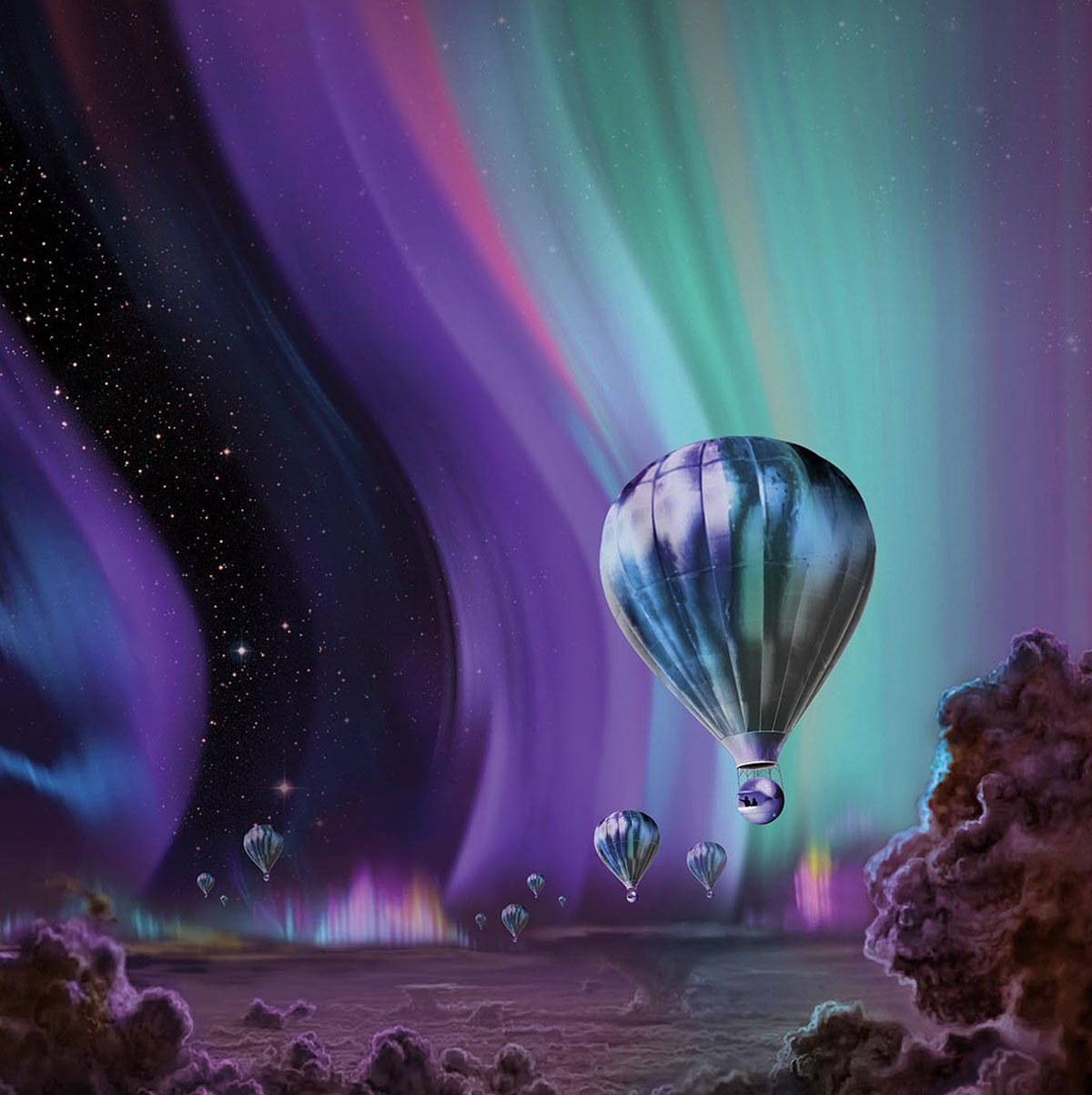Submitted by WA Contents
NASA releases exotic cosmic locales as space tourism posters
United States Architecture News - Feb 22, 2016 - 11:19 9177 views

Jupiter's auroras are hundreds of times more powerful than Earth's, and they form a glowing ring around each pole that's bigger than our home planet.
all images © NASA/JPL-Caltech
NASA / Jet Propulsion Laboratory (JPT) has releases new 14 downloadable travel posters that are colourful, vivid, futuristic and exotic imaginations for cosmic destinations. A set of "travel posters" from NASA/JPL depicts new explosion of futuristic spaces revived in tourism posters. Throughout these posters, NASA allows you to image your future from its own perspective. New travel posters from NASA's Jet Propulsion Laboratory, Pasadena, California, envision a day when the creativity of scientists and engineers will allow reader to do things we can only dream of now.

Astonishing geology and the potential to host the conditions for simple life make Jupiter's moon Europa a fascinating destination for future exploration.
You can take a virtual trip to 14 alien worlds, and maybe even plaster your living room with planetary art, via the new, futuristic space tourism posters. The posters are available free for downloading and printing. Last year, five posters depicting planets beyond our solar system were introduced as part of JPL's Exoplanet Travel Bureau series. They are included in the latest set of 14 posters, which also show such locales as Mars, Jupiter's moon Europa, Saturn's vapor-spewing moon Enceladus, and the dwarf planet Ceres.

Twice as big in volume as the Earth, HD 40307g straddles the line between "Super-Earth" and "mini-Neptune" and scientists aren't sure if it has a rocky surface or one that's buried beneath thick layers of gas and ice.
The posters are the brainchild of The Studio at JPL, a design and strategy team that works with JPL scientists and engineers to visualize and depict complex science and technology topics. Their work is used in designing space missions and in sharing the work of NASA/JPL with the public.

There's no place like home. Warm, wet and with an atmosphere that's just right, Earth is the only place we know of with life – and lots of it. JPL's Earth science missions monitor our home planet and how it's changing so it can continue to provide a safe haven as we reach deeper into the cosmos.

NASA's Voyager mission took advantage of a once-every-175-year alignment of the outer planets for a grand tour of the solar system. The twin spacecraft revealed details about Jupiter, Saturn, Uranus and Neptune – using each planet's gravity to send them on to the next destination. Voyager set the stage for such ambitious orbiter missions as Galileo to Jupiter and Cassini to Saturn. Today both Voyager spacecraft continue to return valuable science from the far reaches of our solar system.

NASA's Mars Exploration Program seeks to understand whether Mars was, is, or can be a habitable world. Mission like Mars Pathfinder, Mars Exploration Rovers, Mars Science Laboratory and Mars Reconnaissance Orbiter, among many others, have provided important information in understanding of the habitability of Mars. This poster imagines a future day when we have achieved our vision of human exploration of Mars and takes a nostalgic look back at the great imagined milestones of Mars exploration that will someday be celebrated as “historic sites.”

The rare science opportunity of planetary transits has long inspired bold voyages to exotic vantage points – journeys such as James Cook's trek to the South Pacific to watch Venus and Mercury cross the face of the Sun in 1769. Spacecraft now allow us the luxury to study these cosmic crossings at times of our choosing from unique locales across our solar system.

Ceres is the closest dwarf planet to the Sun. It is the largest object in the main asteroid belt between Mars and Jupiter, with an equatorial diameter of about 965 kilometers. After being studied with telescopes for more than two centuries, Ceres became the first dwarf planet to be explored by a spacecraft, when NASA's Dawn probe arrived in orbit in March 2015. Dawn's ongoing detailed observations are revealing intriguing insights into the nature of this mysterious world of ice and rock.

The Jovian cloudscape boasts the most spectacular light show in the solar system, with northern and southern lights to dazzle even the most jaded space traveler. Jupiter's auroras are hundreds of times more powerful than Earth's, and they form a glowing ring around each pole that's bigger than our home planet. Revolving outside this auroral oval are the glowing, electric “footprints” of Jupiter's three largest moons. NASA's Juno mission will observe Jupiter's auroras from above the polar regions, studying them in a way never before possible.

The discovery of Enceladus' icy jets and their role in creating Saturn's E-ring is one of the top findings of the Cassini mission to Saturn. Further Cassini mission discoveries revealed strong evidence of a global ocean and the first signs of potential hydrothermal activity beyond Earth – making this tiny Saturnian moon one of the leading locations in the search for possible life beyond Earth.

Frigid and alien, yet similar to our own planet billions of years ago, Saturn's largest moon, Titan, has a thick atmosphere, organic-rich chemistry and a surface shaped by rivers and lakes of liquid ethane and methane. Cold winds sculpt vast regions of hydrocarbon-rich dunes. There may even be cryovolcanoes of cold liquid water. NASA's Cassini orbiter was designed to peer through Titan's perpetual haze and unravel the mysteries of this planet-like moon.
> via jpl.nasa.gov
